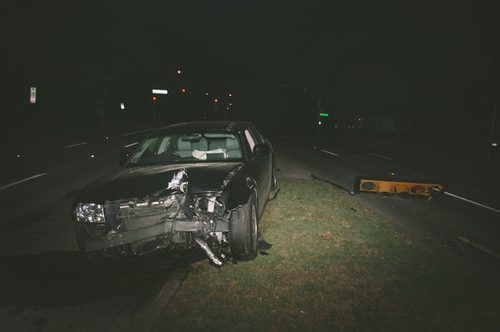ROAD INCIDENTS CONTINUE to be studied, dissected and interpreted, but the findings that speed isn’t the most important factor continue to be denied by Australian authorities.
A startling report from the UK, “Licensed to Skill”, has broken down just what happens in those mysterious “lost” moments leading to crashes. The study analyses who was to blame, what sex or age they tend to be and most important of all, what they did wrong. Using data gathered by police and spanning 700,000 incidents, the Institute of Advanced Motorists has analysed, in staggering detail, the anatomy of a road accident.
Unexpected findings emerged, not least that speeding is relatively unimportant in crashes that kill six people a day in the UK and leave 68 others seriously hurt and 535 with less serious injuries.
“It’s been an eye-opener,” says project manager Neil Greig of the IAM. “Not just in terms of what causes an accident but in terms of dispelling some popular myths. For instance, if you look at government campaigns, they seem to say that speed is the number one problem. But illegal speeding – when drivers exceed the posted limit – accounts for only 13.9 percent of fatal accidents. A bigger cause (15.9 percent) is going too fast for the conditions – entering a bend too quickly, for instance, when you might well be under the speed limit.”
This is also interesting because more UK drivers tend to exceed the posted speed limits than is the case in Australia. UK police take a more enlightened approach to speed limit enforcement and will regularly turn a blind eye to motorists exceeding the limit, so long as it is not blatantly dangerous or stupid to do so. In Australia, of course, we have police commissioners who insist “it is never acceptable, under any circumstances, to exceed the speed limit.”

However, the biggest cause of crashes in the UK today, and almost certainly in Australia as well, is “driver error or reaction”. In the UK it is cited as a factor in more than 65 percent of fatal crashes. The problem makes sobering reading. Topping the list is failing to look properly – “Sorry, mate, I didn’t see you” – applicable to 20.5 percent of fatals involving driver error, followed by “loss of control” (34 percent) which, according to Greig, often means a driver leaving him/herself with “nowhere to go” after entering a bend of other situation too quickly or without sufficient foresight. Other errors include “poor turn or manoeuvre” (12 percent) and “failed to judge the other person’s path or speed” (11.5) percent.
The second biggest cause of fatal crashes, to blame for 31 percent, is “injudicious action”, an umbrella term for “travelled too fast for the conditions (15.9 percent), “exceeded the speed limit” (13.9 percent) or “disobeyed a give way or stop sign” (2.1 percent).
Third comes “behaviour or inexperience” (28 percent) which is a catch-all heading for “careless, reckless or in a hurry” (17 percent), “aggressive driving” (8.3 percent) and “learner/inexperienced” (5.3 percent).
Fourth in the lottery that determines who gets to live and who doesn’t is “impairment or distraction” (responsible for 19.5 percent of fatals) covering “alcohol” (a contributing factor in 9.6 percent of fatal crashes in the UK) and “distraction in the vehicle” (2.6 percent).

What is interesting with these figures is that while some factors may be key in a small number of crashes, they aren’t all that significant. Despite campaigns about dazzling other drivers with headlights, for example, this is a factor in only 0.4 percent of fatals. Slippery roads are a factor in 10.9 percent of fatals, while bad road layouts are to blame for 3.2 percent.
Pedestrians, however, are a more significant factor. “Pedestrian only, casualty or injured” accidents account for more than 18 percent of collisions, with 10 percent of them “failing to look properly”.
The report identifies 77 possible causes of crashes, including vision affected by the sun, spray from other vehicles and scratched windscreens. Of those motorists adjudged by police to have been distracted, only 0.8 percent were using a mobile phone and 0.4 percent had defective eyesight. Other reasons included “stolen vehicle” (1.1 percent), “emergency vehicle on call” (0.3 percent) and “vehicle in the course of crime” (0.4 percent).
Vehicle defects were a factor in 2.8 percent of fatals, with tyres most to blame (1.5 percent) followed by defective brakes.
The message should be clear, even though these are UK figures and may not be replicated in Australia: it’s not your car or the road conditions that are most likely to kill you; it’s your own driving. Men tend to be more often reckless or in a hurry or travelling too fast for the prevailing conditions. Women turn up more under “inexperience” but are less likely to have been drinking.
The time of day is also a significant factor. Between 7 pm and 7 am, loss of control is the key factor, while at other times it is the old favourite, “failed to look properly”. Motorists are more likely to be distracted or impaired at weekends (17 percent) than on weekdays (10 percent).
So what’s the lesson here for drivers? Pay more attention; take that little extra time to look more carefully. Most crashes aren’t about cars going dramatically out of control, despite what Hollywood would have us believe (and what Hollywood would have us believe we can walk away from). Crashes are usually the result of small errors having sudden and serious consequences. Not making that small error can be the difference between life and death. Literally.

What to do when you have an accident:
* Don’t lose your temper even if provoked.
* Don’t admit liability at the scene; you may be confused, and it may adversely affect the claims process
* Call the emergency services – you must if anyone is injured
* Call your insurance company who should give you guidance
* Make a note of where you are, the road conditions, and what happened
* Note other vehicles involved – registration numbers, makes, models
* Note who was involved – names, telephone numbers, addresses, insurance details
* Make a note of any witnesses who might confirm what happened
* The Highway Code says you must give your details to anyone with reasonable grounds for requiring them. If you don’t you must report details to police within 24 hours
* Take pictures if possible; mobile phones are fine
* If you suspect someone was breaking the law – speeding, using a hand-held phone etc – tell your insurer and the police
* If you have been injured, deal with your insurer rather than any cold-call lawyers who might contact you.
